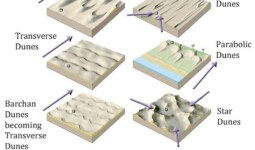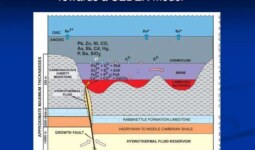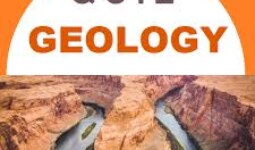Facies Classification of Metamorphic Rocks
Metamorphic facies classification is an essential tool in understanding the pressure-temperature (P-T) conditions under which rocks undergo metamorphism. It helps geologists interpret the geological processes and tectonic settings responsible for metamorphic transformations. In this article, we explore the classification system in detail, focusing on its principles, major facies types, and their applications.
Understanding Metamorphic Facies
Metamorphic facies represent groups of mineral assemblages stable under specific ranges of pressure and temperature. First introduced by Pentti Eskola in 1920, the concept is based on the principle that mineral stability is controlled by thermodynamic conditions and rock composition.
Key Features:
Mineral Assemblages: Each facies has a characteristic set of minerals.
P-T Conditions: Facies correspond to distinct P-T fields on a phase diagram.
Independence of Protolith: While composition affects mineralogy, facies classification is independent of the original rock type.
Facies Classification System
The metamorphic facies system is classified based on the pressure and temperature conditions during metamorphism. It includes:
- Low-Grade Facies
- Intermediate-Grade Facies
- High-Grade Facies
- High-Pressure Facies
- Contact Metamorphism Facies
Low-Grade Facies
Low-grade facies form under low temperature (<400°C) and pressure. These facies are typically associated with burial and the early stages of regional metamorphism.
Zeolite Facies
Conditions: Low temperature (50–250°C) and low pressure (<2 kbar).
Minerals: Zeolites (laumontite, analcime), quartz, feldspar.
Geological Setting: Diagenesis and very low-grade metamorphism in sedimentary basins.
Prehnite-Pumpellyite Facies
Conditions: 200–400°C, pressure of 2–4 kbar.
Minerals: Prehnite, pumpellyite, chlorite, quartz, albite.
Geological Setting: Low-grade metamorphism of mafic rocks and greywackes.
Intermediate-Grade Facies
Intermediate facies occur at moderate temperatures (400–600°C) and pressures, typically in regional metamorphism associated with mountain-building processes.
Greenschist Facies
Conditions: 300–450°C, 3–10 kbar.
Minerals: Chlorite, actinolite, epidote, albite.
Geological Setting: Subduction zones and orogenic belts.
Amphibolite Facies
Conditions: 500–700°C, 5–10 kbar.
Minerals: Hornblende, plagioclase, garnet, epidote.
Geological Setting: Regional metamorphism of mafic rocks in collisional orogens.
High-Grade Facies
High-grade facies represent conditions of high temperatures (>600°C) and moderate to high pressures. These facies are typically found in the deep crust or at convergent plate boundaries.
Granulite Facies
Conditions: 700–900°C, 6–12 kbar.
Minerals: Orthopyroxene, clinopyroxene, plagioclase, garnet.
Geological Setting: Lower crust in collisional orogens and high-grade metamorphic terrains.
High-Pressure Facies
High-pressure facies form in subduction zones and are characterized by low temperature and high-pressure conditions.
Blueschist Facies
Conditions: 200–500°C, 8–18 kbar.
Minerals: Glaucophane, lawsonite, epidote.
Geological Setting: Accretionary wedges and subducting slabs.
Eclogite Facies
Conditions: >600°C, 15–30 kbar.
Minerals: Omphacite, garnet, kyanite.
Geological Setting: Subducted oceanic crust and high-pressure metamorphic terrains.
Contact Metamorphism Facies
Contact metamorphism facies form in the thermal aureoles around igneous intrusions.
Hornfels Facies
Conditions: 300–700°C, low pressure (<3 kbar).
Minerals: Biotite, cordierite, andalusite.
Geological Setting: Thermal aureoles of igneous intrusions.
Sanidinite Facies
Conditions: >800°C, low pressure.
Minerals: Sanidine, spinel, hypersthene.
Geological Setting: Contact zones of very high-temperature intrusions.

Applications of Metamorphic Facies
Tectonic Interpretations
Metamorphic facies provide clues about tectonic environments, such as subduction zones (blueschist and eclogite facies) and collisional zones (granulite facies).
P-T Path Reconstruction
The mineral assemblages in different facies allow geologists to reconstruct the P-T history of a rock, revealing its prograde, peak, and retrograde metamorphic stages.
Exploration Geology
Understanding metamorphic facies aids in locating economically valuable deposits, such as gold in greenschist facies and diamonds in eclogite facies.
This comprehensive understanding of metamorphic facies provides a valuable framework for interpreting the metamorphic evolution of rocks, aiding both academic research and practical applications in geology. Let me know if you would like further information on any facies or specific examples.




I like this video